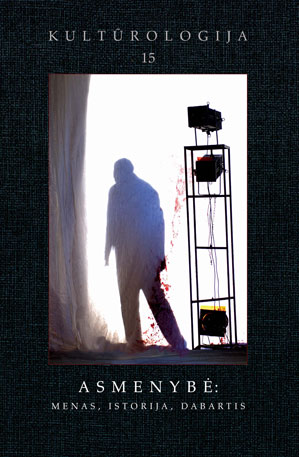Ideologijų kova: meno diskursas istorijos lūžyje
Struggle of Ideologies: Art Discourse at the Turning Point of History
Author(s): Daiva CitvarienėSubject(s): Cultural history
Published by: Lietuvos kultūros tyrimų
Keywords: struggle of ideologies; art discourse; history
Summary/Abstract: The article discusses the decade of the 1910s in Lithuania, along with the problems of post-Communist Eastern and Central European art discourse, which affect almost the entire region which has experienced this post-revolution period. Despite different historical, cultural, and political conditions, we come up against a common fate of artistic traditions - a belief in the universal character of art, the accentation of the independent status of art works, and the particular ideology-making of the autonomy of art. The mythology of universal-ism in the countries under Soviet influence served as the basis of the entire mechanism of cultural preservation - the resistance against the totalitarian oppression and so-called "Soviet internationalism". In the context of official art politicking, autonomous art was understood as asmenybė: an expression of freedom, and finally freedom in art was linked with dabartis the right to remain outside, “unrecruited” , and create “autonomous art. At the same time Modernist art took on a political meaning, because in defending the values of modernists and the autonomy of art, society was defended from the ideology of the ruling powers. As a result the attention paid to social problems, which gathered particular strength in the Western art world in the 1910s, didn't find the same response in post-Communist countries. They lost their purity here because of the government's multi-faceted manipulation of these themes, and become "suspect" and "unartistic". The strongly-entrenched avant-garde tradition upheld old barriers and a selective stance, which was to throw out all principles of thinking that didn't fit in the ideology of universal art and its possible legitimation of the problems it raised without exception. At the time the former strategies of unofficial art, which gained a status of power, radically changed, and began expressing a strong resistance against new theories from the West. The former avant-garde started to consider Western theories as foreign, and not having anything to do with "our" context and took up a position that they had resisted against earlier - authoritarian, canon-like and repulsive. However, the modernist mythology of universalism stopped serving as a tool in defining identity in a society where democratic processes were taking place, and in the flux of its further differentiation. The cultural representation of the body and gender, the Christian paradigm of culture, memory and history became the main themes of art during that time. The basis of the cultural paradigm, which were "national identity" and Christianity as the central factors of cultural identity , became the main aim of artists in Lithuania...
Journal: Kultūrologija
- Issue Year: 2007
- Issue No: 15
- Page Range: 339-361
- Page Count: 22
- Language: Lithuanian

